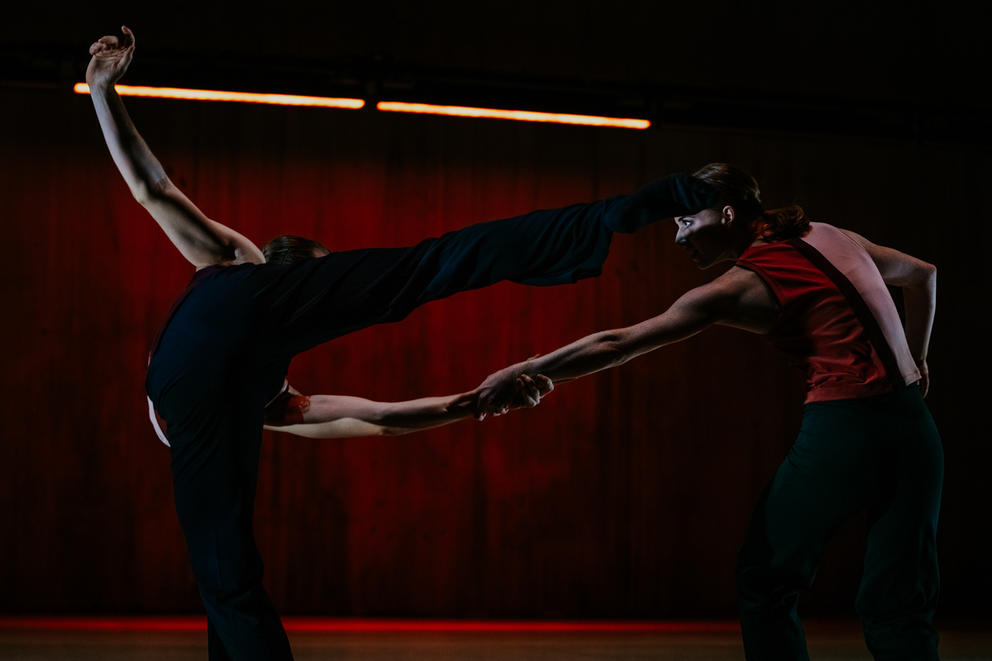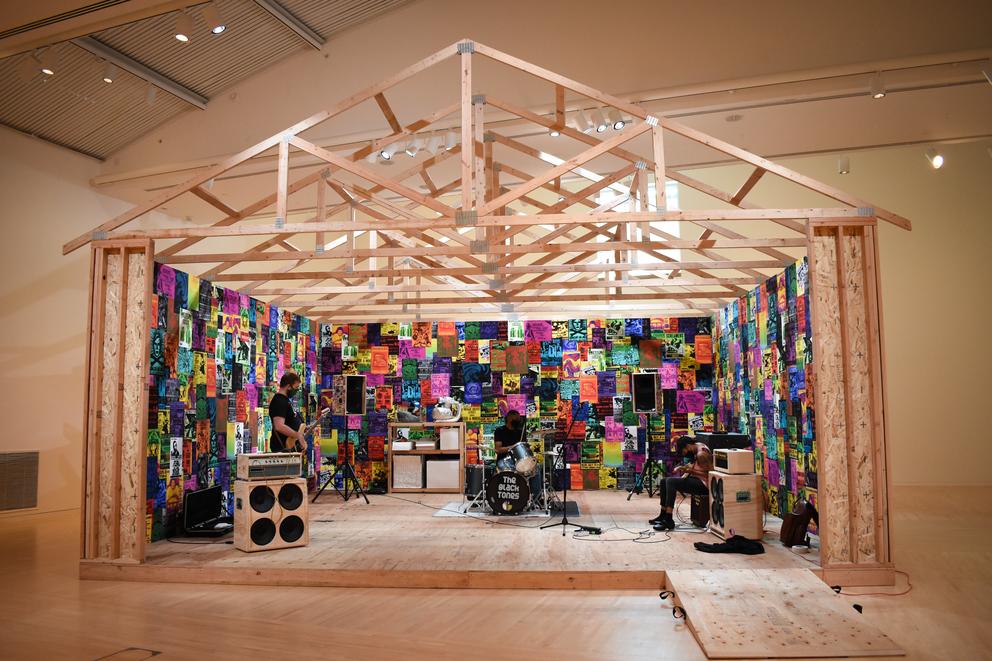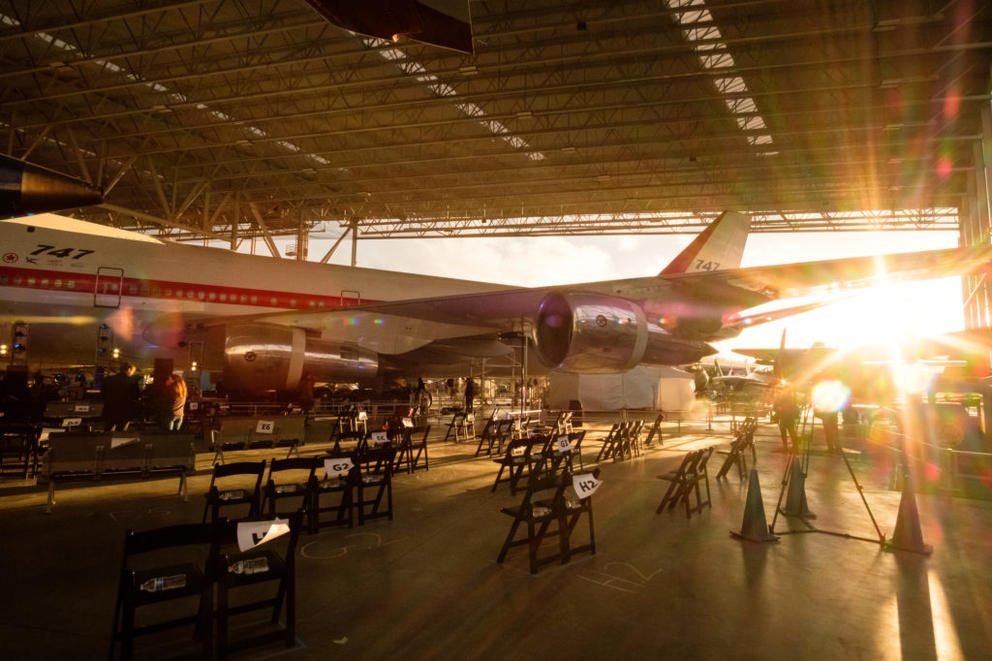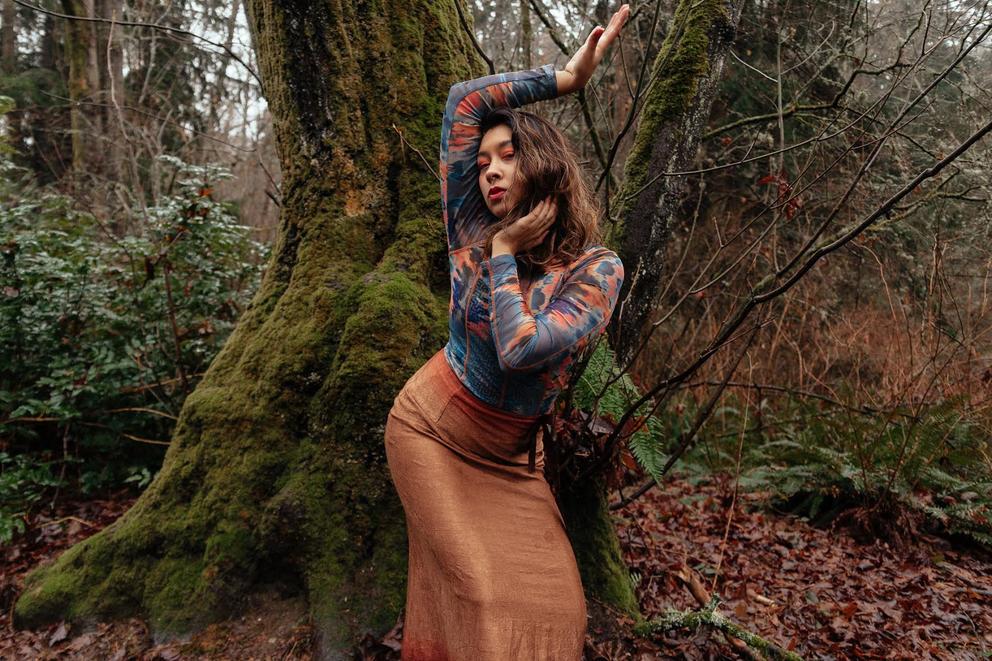Art at the end of the world
During the pandemic shutdowns, Seattle contemporary dance company Whim W’Him kept “pivoting” with poise, as dancers do — jumping gracefully through COVID-sized hoops at every turn. The company had dancers quarantine and collaborate in pods, made transporting dance films and even danced outdoors during free pop-up performances in local parks. Now, more than a year after suspending live indoor dance, Whim W’Him is hosting its first in-person performances at the Vashon Center for the Arts.
“Performing live cannot be replaced,” Artistic Director Olivier Wevers says. “The dancers and the audiences need it.” On the WHIM W’Him IRL bill: three world premieres (by Joseph Hernandez, Karl Watson and dance duo FLOCK aka Alice Klock & Florian Lochner), including one aptly titled, in part, “How to Make Art at the End of the World.” Wevers will also restage audience favorite “Monster,” and an excerpt from Ihsan Rustem’s “Of Then and Now,” which addresses anxiety around a major future turning point and which, perhaps presciently, Whim W’Him originally staged right before the pandemic shutdowns.
If you go: WHIM W’Him IRL, May 15-16 (2 p.m. and 7 p.m.) at Vashon Center of the Arts. Both matinees are free for dance students from Vashon and frontline workers (assigned via a lottery). Sunday evening is sold out. ($25-45)
Safety notes: The audience will be capped at 25% capacity. There will be designated open/closed seats to allow for social distancing with people outside your pod. Learn more here.
Museum garage rock
Garages hold a special place in the American imagination. From Microsoft and Apple to basically any rock band: garages are the stuff of 20th century origin myths, magic portals of suburbia (or at least a site for invention and disruption). Acclaimed Los Angeles-based artist Gary Simmons has built one of these liminal spaces in the recently reopened Henry Art Gallery, as part of his new solo show The Engine Room.
Simmons — who often uses iconic elements of American culture to question race and class — collaged the plywood shed with music posters from his own extensive archive and equipped the structure with Christmas lights and sculptures that double as (working, functional) music gear. As part of the show, local musicians, including The Black Tones and Ishmael Butler of Shabazz Palaces and Digable Planets, will rehearse inside the installation while visitors roam about. (True to its Platonic form, the garage will not house the final, full-fledged performances — those will be livestreamed only.)
If you go: The Black Tones rehearsal: May 16, 1-4 p.m., at the Henry. Livestream: May 29, 6 p.m., on YouTube. Ishmael Butler rehearsal: June 26, 1-5 p.m. Live broadcast: July 3 on YouTube. (Free)
Safety notes: To allow for social distancing, get a free timed ticket for a museum visit. Audience capacity will be limited.
Socially distanced theater
Local theater ensemble The Williams Project has come up with a way for the show to go on: by performing it not from the stage, but from the balcony of the Rainier Arts Center, with a small audience seated on the nearby lawn.
For the brand-new Campfire Festival, four local artists created new, half-hour solo performances tailored to the times and the (COVID) environment. Playwright, composer, lyricist and “Lizard Boy” Justin Huertas wrote a musical short called “Hell Here” to be performed by the multitalented Rheanna Atendido, while Aaron Martin Davis Norman considers “how we can grieve well” in “Storytime: Good Grief.” Maggie L. Rogers presents a memoirist look at growing up and roller skating, while in “30 Minutes” Dedra D. Woods traces the riots in Detroit in 1967 to present-day Seattle.
If you go: The Campfire Festival performances happen every weekend from May 20th-June 6th at the Rainier Arts Center. Each showtime includes two short solo works, plus a post-show conversation with both artists. (Pay what you can, $25-$50)
Safety notes: All performances happen outdoors (there are no restrooms available during the event), and capacity is capped at 50 people (audience and performers combined). There will be both picnic-style lawn seating as well as chair options, with designated areas marked by hula hoops. Distancing of at least 6 feet is required between audience members and 20 feet between performers and audience. Read more about safety measures here.
Concerts behind glass
On a recent Friday eve, Katrina Kope — platinum blonde and glitter-vested — walked into the Capitol Hill gallery space Vermillion, settled behind the mic/soundboard and launched into a song with the refrain: “I came to party.” Soon, a group of 20 onlookers from the street grew into an audience of 50. “Crawl out of your cage/ Let go, get down, come to the stage,” Kope sang.
The lyrics were fitting: Kope was the headliner of a new biweekly series of concerts and live performances called Artists Behind Glass, which features performances indoors that the audience can watch from the street (outdoor speakers under cute umbrellas emit sound into the evening sky). Curators Ana Belle Gulin and Aria Riding of local BelleCat Productions say they started the series to fill the painful void after COVID closures and the dismantling of CHOP. “We wanted to breathe, to help have some positive, creative, alive energy coming back into the Capitol Hill Community,” Belle Gulin says. Though it’s been rewarding and moving to organize concerts amid COVID closures (“We’ve had people come up and talk to us and cry, just because they were walking by and saw a sound check”), they note: “Hopefully, the concept won’t be necessary forever!”
If you go: Artists Behind Glass, first and third Friday of the month at dusk (about 8.30 p.m.) at Vermillion Art Gallery + Bar. Up next: experimental band Forest Friends, May 21, followed by local “dark wave performance art duo” L80, June 4. Free, pay or tip what you can (cash or Venmo).
Safety notes: The audience remains outdoors; musicians (who may take their masks off) perform inside. Everyone is encouraged to stay 6 feet apart, though that may be difficult if it gets crowded.
Soft rock, hard asphalt
Perhaps there once was a (pre-pandemic) time when you would have rolled your eyes at the mere thought of a soft-rock performance or scoffed at the idea of attending a concert on a trailer in an empty parking lot. But you might be a different person now.
Mark Siano, local performing arts producer and impresario (of Café Nordo and comedy troupe The Habit), doesn’t have time for cool apathy. He’s too busy challenging “the notion that music is not essential” with a new series of outdoor music and comedy shows in Seattle’s SoDo neighborhood.
During “The Church of Soft Rock,” he and his band The Enablers will play “some of the smoothest soft rock jams ever,” along with original music and stand-up. Also appearing on stage: Opal Peachey, a longtime company member of Café Nordo, Seattle’s immersive dinner theater, and Helen Roundhill, who has graced Seattle’s stages as drag king, lounge singer, Shakespearean, goblin and burlesque dancer.
If you go: Church of Soft Rock, May 22-23 and 29-30, 1 p.m., 3.30 p.m. on Saturdays, 4 p.m. on Sundays. Parking lot at Orca Bay SoDo, 2729 Sixth Ave S. ($28)
Safety: Groups are limited to 15 people max (if King County remains in Phase 3) and need to maintain a 6-foot distance from other groups. Seating will be provided, or you can bring your own patio furniture; tailgating is also possible.
Top-flight live music
If you had told me in, say, fall 2019 that concerts would vanish from the calendar and make a comeback in a historic aircraft hangar at the Museum of Flight more than a year later, I would not have believed you. But this is reality, thanks to new event organization Safe & Sound Seattle (tagline: “Experience the music you love the way you love it: live”). The group’s first concert, featuring the Black Tones this past March, was a major success, with the band rocking amid historic aircraft in the outdoors-but-covered Aviation Pavilion.
Next up are two more local bands: 2020’s breakout funk-hop phenomenon Marshall Law Band and the homegrown, must-see-live punk-rock band Tres Leches. The location makes for a theatrical and socially distanced (albeit possibly chilly) experience. The stage sits under a Boeing 747 plane; bands descend from its staircase down onto the stage. What a (re)entry!
If you go: Marshall Law Band + Tres Leches, May 29, 7.30 p.m., Museum of Flight. (Starting at $45 per person)
Safety notes: Total attendance is capped at 180 people. The audience is divided into “pods” of two, three or four people, seated 6 feet away from other groups.
Dancing together, 6 feet apart
Aching to move, twist, twirl, slide, land mower and jumping jack your body in unison with a joyful crowd? There’s some good news on the horizon: Dance Church — the all inclusive dance class founded by Seattle choreographer Kate Wallich, and one of the first to go virtual when COVID struck — is adding in-person events to its popular pandemic-induced online “Dance Church Go” roster, in partnership with Zella (Nordstrom’s in-house sports brand).
For those who don’t know what Dance Church is, calling it a “class” may be misleading; it’s more like 90 minutes of alcohol-free clubbing while an instructor gently leads you through the motions — which you are free to ignore. There is only one edict: everyone is welcome, regardless of experience, body type, identity, gender, ability or general clumsiness. At Dance Church, no one cares if you’re out of step. (As long as you keep your 6-foot distance, for now.)
If you go: Dance Church x Zella in-person class at Seattle Center’s South Fountain Lawn. July 10, 10 a.m., 12:30 p.m. and 3 p.m. (Free; reservation encouraged)
Safety notes: Guests will be required to wear a mask at all times and social distance markers will be used throughout.
A hybrid dance festival
In the new pandemic lexicon for the arts and culture scene, “hybrid” is fast approaching “pivot” in the top three most-used words (see also: “reimagined”). It’s mostly used to signify that in the post-pandemic future, art events will be happening both online and in-person. This June, the Seattle International Dance Festival is among the first to put this into practice, with a special edition of its annual contemporary dance festival. The festival will stage live performances for a reduced-capacity in-person audience at Broadway Performance Hall, as well as a livestreaming option for those at home.
Each evening of the six-day festival will be curated by a local dance institution, including Velocity Dance, Spectrum Dance Theater, Khambatta Dance, Exit Space and Yaw Theatre, all of which will be bringing beloved and up-and-coming local dancers and choreographers like Nia Amina-Minor, Albee Abigania, Lavinia Vago, Moonyeka, and Dani Tirrell to the stage for the first time in more than a year.
If you go: Seattle International Dance Festival, June 12-19, 7.30 or 8 p.m., at Broadway Performance Hall, in-person and livestreaming. ($18-135)
Safety notes: The audience capacity will be limited to 25% to allow for socially distanced seating.
Get the latest in local arts and culture
This weekly newsletter brings arts news and cultural events straight to your inbox.









